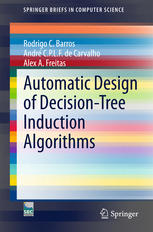

Most ebook files are in PDF format, so you can easily read them using various software such as Foxit Reader or directly on the Google Chrome browser.
Some ebook files are released by publishers in other formats such as .awz, .mobi, .epub, .fb2, etc. You may need to install specific software to read these formats on mobile/PC, such as Calibre.
Please read the tutorial at this link: https://ebookbell.com/faq
We offer FREE conversion to the popular formats you request; however, this may take some time. Therefore, right after payment, please email us, and we will try to provide the service as quickly as possible.
For some exceptional file formats or broken links (if any), please refrain from opening any disputes. Instead, email us first, and we will try to assist within a maximum of 6 hours.
EbookBell Team

4.4
52 reviewsPresents a detailed study of the major design components that constitute a top-down decision-tree induction algorithm, including aspects such as split criteria, stopping criteria, pruning and the approaches for dealing with missing values. Whereas the strategy still employed nowadays is to use a 'generic' decision-tree induction algorithm regardless of the data, the authors argue on the benefits that a bias-fitting strategy could bring to decision-tree induction, in which the ultimate goal is the automatic generation of a decision-tree induction algorithm tailored to the application domain of interest. For such, they discuss how one can effectively discover the most suitable set of components of decision-tree induction algorithms to deal with a wide variety of applications through the paradigm of evolutionary computation, following the emergence of a novel field called hyper-heuristics.
"Automatic Design of Decision-Tree Induction Algorithms" would be highly useful for machine learning and evolutionary computation students and researchers alike.